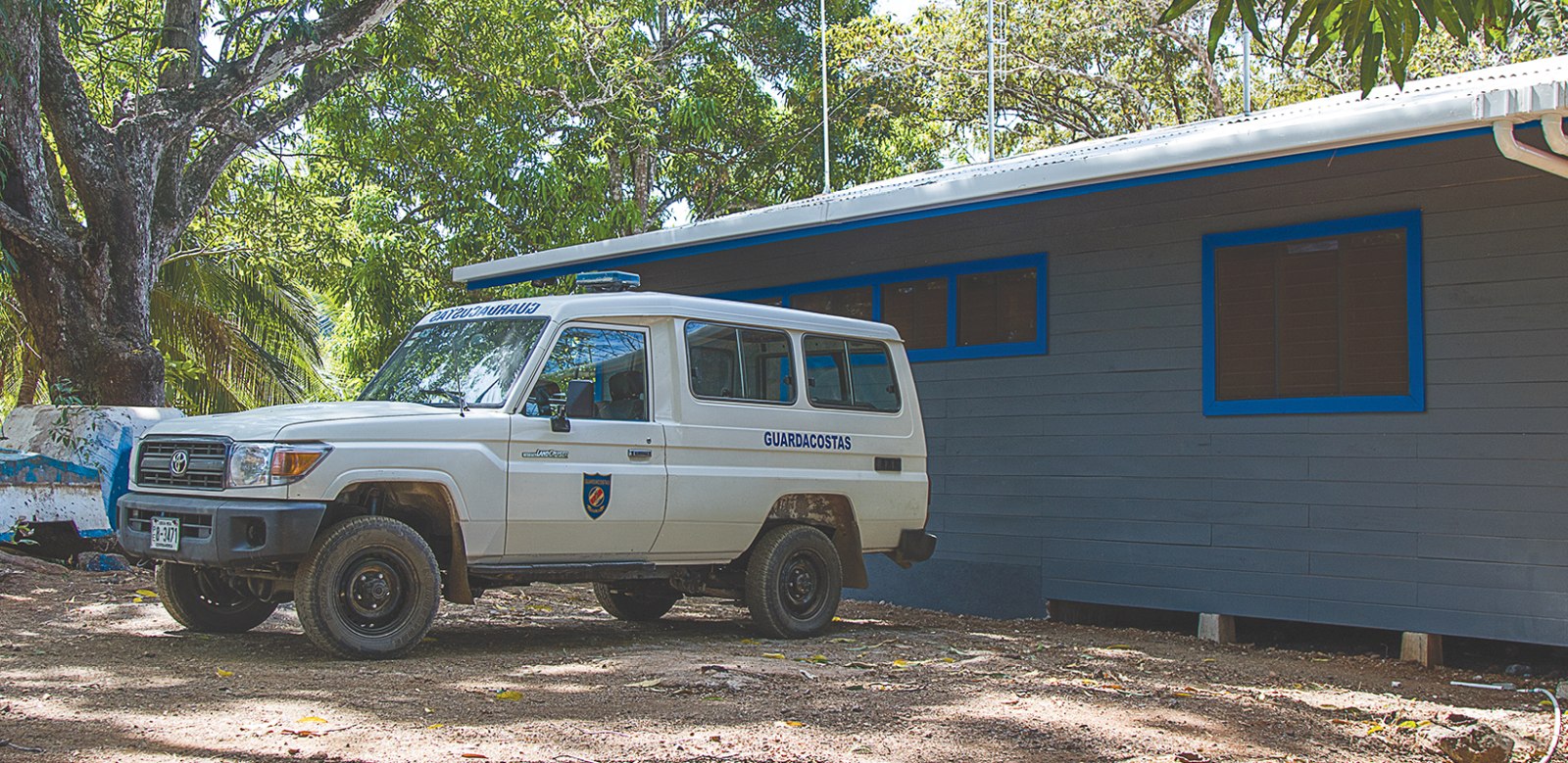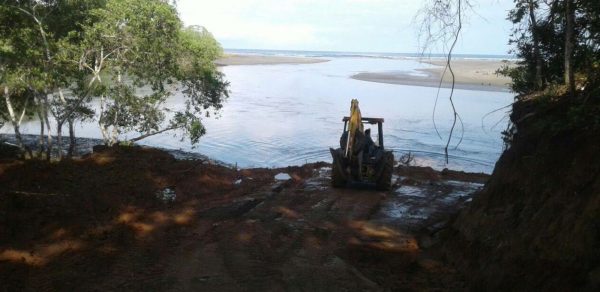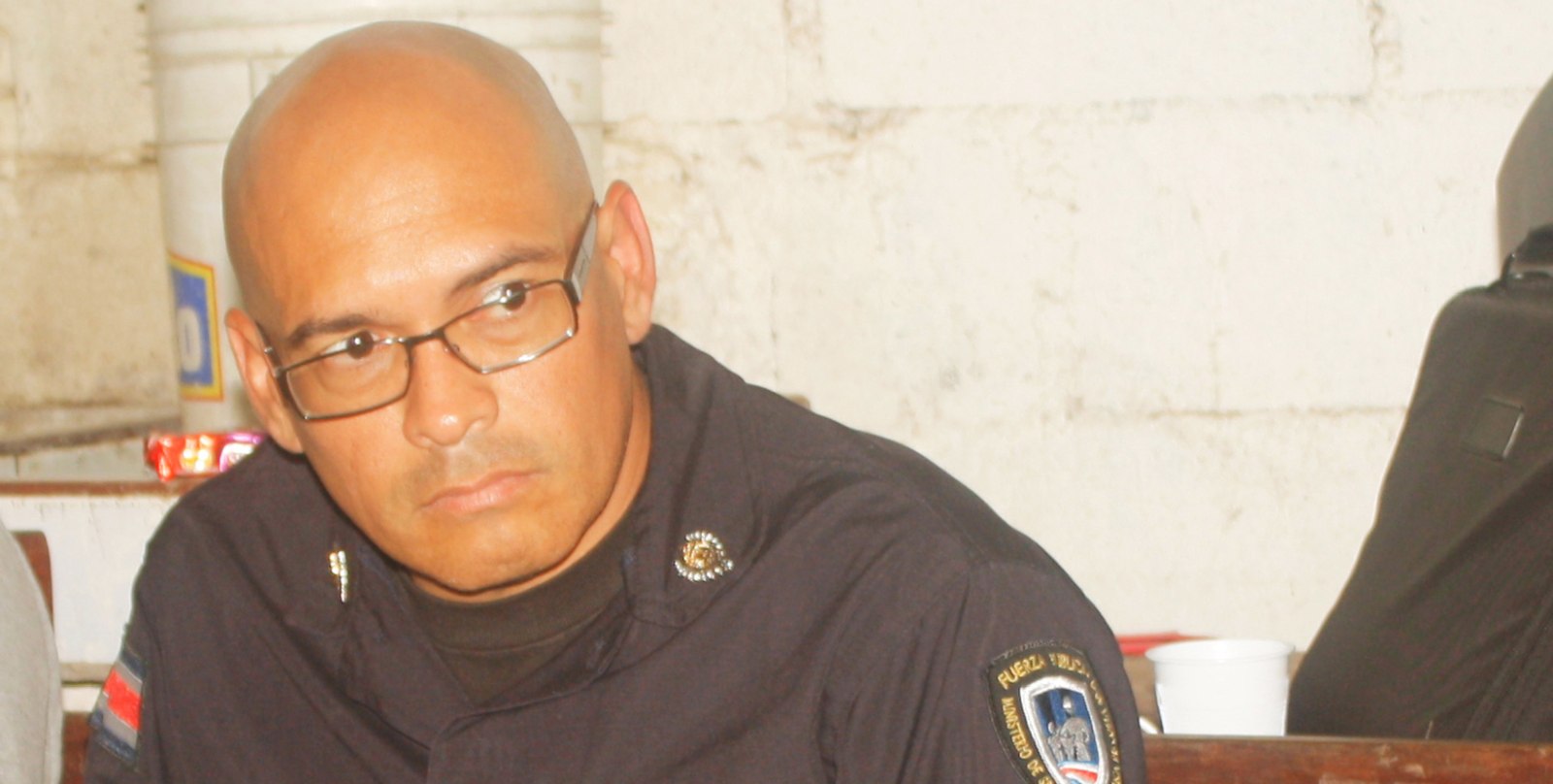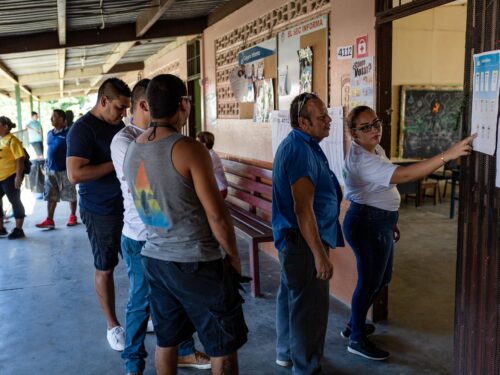
In order to reinforce surveillance of the coastal areas in the province of Guanacaste, in late December of 2015, the National Coast Guard Service (SNG- Servicio Nacional de Guardacostas) began using a new operations base in the area of Puerto Coyote of Nandayure. The area is a strategic point for dealing with crime in the coastal sector due to its geographical position close to the Gulf of Nicoya.
The new station cost ¢30 million ($57,000), financed with funds from the SNG, and is equipped with beds, kitchens, household goods and appliances, a modern, powerful high-speed watercraft of the latest technology, valued at more than $120,000 USD, and a new 4×4 vehicle. The staff rotates and covers the entire peninsula.
Currently Guanacaste has a station in Puerto Mora in Cuajiniquil in the canton of La Cruz, and about two and a half years ago, the post in Flamingo in Santa Cruz was inaugurated, a project that cost about $2.5 million, funded by the U.S. government. The station in Punta Puerto Coyote is now added to that list.
The SNG has some 75 officials available in the Guanacaste region, including operational and administrative personnel, and seven small watercraft, but they have the support of large patrol units that come from Puntarenas periodically.
According to Martin Arias, regional director of the coast guard, although they have limited resources, they have a high level of technology that allows them to be efficient.
“The technology allows us to transfer data via Internet, to consult the criminal records of people we intercept at sea and on the coast, to use databases linked with the Supreme Electoral Court, real estate, immigration, INCOPESCA and different institutions that can provide us with information about the person about whom we are consulting. This allows us, in a few minutes, to find out more information about the intercepted person,” Arias said.
Along with that, he indicated that the watercraft have a modern communication system with radar and geo-positioning systems , and thermal night vision cameras.
The most frequent operations have to do with illegal fishing, supporting immigration police, protecting natural resources, protecting tourists in the beach areas, maritime security and navigation and combating drug trafficking.







Comments